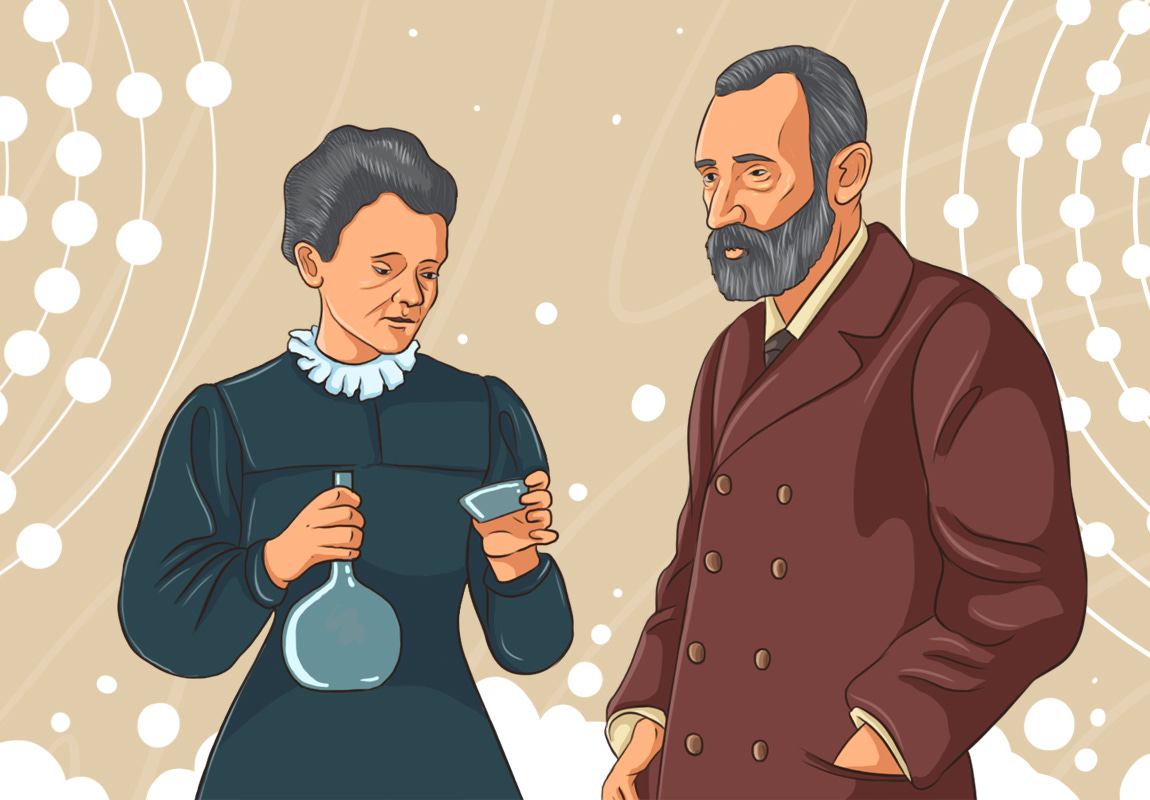Pierre Curie received a letter in 1903 from the Nobel Committee. The letter said Pierre Curie and Henri Becquerel were chosen to be awarded the Nobel Prize for their discoveries related to radioactivity and contributions to Physics, that year. Pierre Curie replied to the letter stating he could not receive the Nobel Prize alone, since his wife Marie Curie was also involved in the research and thus was entitled to the same honour.
Women were discriminated against even in the field of scientific research. Pierre Curie, through his act, opposed the discrimination and argued that women be given due recognition. That was how history was created when Marie Curie and Pierre Curie shared the Nobel Prize with Henri Becquerel.
Marie Curie thus became the first woman and the Curies the first married couple to receive the Nobel Prize.
Astute mathematician
Pierre Curie was born to Dr Eugene Curie and Sophie Claire Curie in Paris, France, on May 15, 1859. Pierre showed interest in mathematics and geometry at an early age, and his father encouraged him.
Thus, at the age of 16, Pierre obtained a licence in Mathematics. By the age of 18, he had obtained a licence in Physics, similar to a US Master’s degree, from the University of Paris, Sorbonne. However, due to financial constraints, Pierre had to postpone his research studies.
According to Britannica, Pierre Curie took up the post of Laboratory Instructor and continued with his research in his own way. He conducted scientific experiments with his elder brother Paul Jacques Curie in 1880. They showed that when quartz was compressed, an electric potential was generated, called piezo-electricity. To validate this, the duo developed a piezo-electric quartz electrometer.
The following year, the brothers discovered that the phenomenon could work in the opposite direction as well. They proved that quartz could be deformed if it was subject to an electric field. Later as part of his study of magnetic fields, Pierre determined the size of a Curie Scale.
Pierre Curie enrolled for doctoral studies with the savings from his work as a Laboratory Instructor. In 1895, Pierre obtained a Doctorate from the University of Paris.
Life and science with Marie
It was during his research studies that Pierre Curie met Marie, whose maiden name was Maria Sklodowska. Marie was looking for a place to start her own laboratory. Pierre, who had met Marie through a mutual friend, invited her to his laboratory. Marie, who was short of money then, agreed to share the laboratory with Pierre. Later, on July 26, 1895, they married each other.
Research life
The year 1895 was a very important year in Pierre Curie’s life. It was in the same year that Marie had become his life partner and he had obtained his doctoral degree.
In 1898, the Curie couple grabbed attention when they managed to isolate two elements, Polonium and Radium.
Pierre’s doctoral thesis was on magnetism. Curie’s Law was developed in the context of this research. He named the constant factor in the law Curie Constant. In addition, it was found that at a certain temperature some objects lost their magnetic properties, and this condition was referred to as the Curie Temperature. Pierre also formulated the symmetry principle.
Pierre, along with Marie did extensive research that led to more discoveries. In 1898, the Curie couple grabbed attention when they managed to isolate two elements, Polonium and Radium. The Curies were also the first to use the term radioactivity.
In 1903, the Royal Society of London invited Pierre to present a research paper on his findings, but the Society denied Marie an opportunity to make a presentation there. Interestingly, it is in the very same year, Pierre Curie, Marie Curie and Henri Becquerel won the Nobel Prize in Physics.
Experimenting on self
As a part of the research, Pierre subjected himself to experiments with radiation in the 1900s. Marie was also subjected to constant exposure to radiation as part of her research.
Pierre and Marie continued their research together after receiving the Nobel Prize in 1903.
According to History.com, they had realised that radiation could help shrink cancer cells, but they were too late to realise the consequences of constant exposure to radiation. Pierre and Marie gradually began to develop some physical ailments, but they did not back out of their experiments.
Pierre had begun working as a lecturer at the University of Paris, Sorbonne, in 1900. It was during this time that Pierre, along with his student Albert Laborde discovered nuclear energy. They found that radiant heat was emitted constantly from radium particles. The radiations were found to be positive, negative, or neutral depending on the alpha, beta, and gamma radiations emitted from radioactive materials.
Premature demise
Pierre and Marie continued their research together after receiving the Nobel Prize in 1903. In their personal life, they had two daughters: Irene, born in 1897, and Eve, born in 1904.
When the family was living happily, fate struck. Pierre died on April 19, 1906, after he slipped and fell while crossing a busy road in Paris and was run over by a horse-drawn carriage. Later, in 1910, a unit of radioactivity was named Curie. The name was given in honour of Pierre Curie.
Pierre died at the age of 46, leaving two children, one aged nine years and the other aged one and a half years, in the hands of Marie. Both Pierre and Marie had been exposed to excessive radiation. Experts believe that if the accidental death had not occurred, Pierre would have still prematurely died from excessive exposure to radiation. Marie Curie died in 1934 from aplastic anemia caused by excessive exposure to radiation.
According to the Business Insider, it is said that radiation is still emitting from the papers used by Pierre and Marie with residual radioactivity! The books and other objects that the Curies used are still kept in lead-lined boxes because of the radiation.
One of the daughters, Irene, and her husband, Frederic Joliot, were also researchers of radioactivity. Both of them died from excessive exposure to radiation.
‘Nobel Family’
The first Nobel Prize that the Curies won was in Physics in 1903. After that, Marie, along with Pierre, was awarded the Nobel Prize in Chemistry in 1911 for the discovery of two elements.
Irene, the eldest daughter and her husband Frederic Joliot, jointly won the Nobel Prize in 1935 for their discoveries related to radioactivity.
The youngest daughter, Eve, became a writer and journalist. She wrote the biography of Marie Curie. Eve’s husband, Henry Labouisse Jr., was UNICEF’s Executive Director. Henry received the Nobel Peace Prize in 1965.
Thus, four Nobel Prizes were awarded to five members of the Curie family – Pierre Curie and Marie Curie in 1903, Marie Curie in 1911, Irene Curie and Frederic Joliot in 1935, and Henry Labouisse Jr.in 1965.
Now put on your thinking hats and think about the following questions for a couple of minutes.
How would you describe the term “radioactivity” to your students?
How would you describe the contributions of Pierre Curie and Marie Curie in the field of science?
Write down your thoughts and discuss them with your students, children and your colleagues. Listen to their views and compare them with your own. As you listen to others, note how similar or different your views are to others’.
Thank you for listening. Subscribe to The Scando Review on thescandoreview.com.
Happy Teaching!













The Curie Family: Lives Dedicated to Science